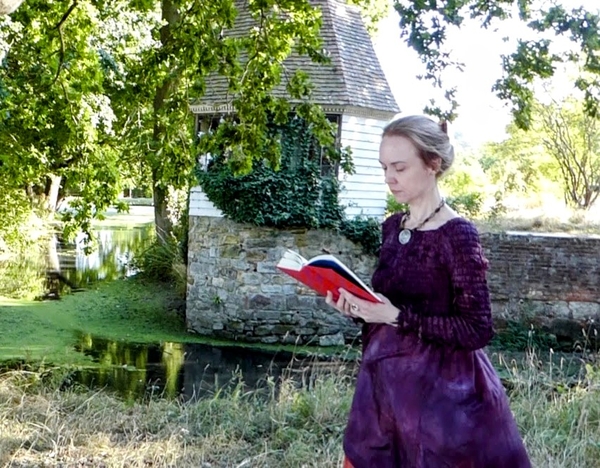
We cordially invite you to watch an online presentation of Kirsty Warrick’s performance of her song “The Shape that Remains” inspired by Virginia Woolf’s novel To the Lighthouse
Kirsty Warrick is an independent artist, content writer, editor, and producer. She has lived and worked in London for eighteen years but was born in and grew up on the West Coast of Scotland. She earned a BA (hons) in English Language and Literature from the University of Strathclyde and completed a Post Graduate Certificate in English at University College London in 2021, specialising in Virginia Woolf, Elizabeth Bishop, and TS Eliot. She also holds two pre-clinical qualifications in Psychoanalytic Psychotherapy. Her deep passion for music has in recent years led to a recording contract as a composer/singer songwriter.
Organizer: dr hab. Małgorzata Hołda, Department of British Literature and Culture, University of Lodz
Kirsty about the genesis of “The Shape that Remains”:
When writing the song, I took inspiration from the life and art of Virginia Woolf. I was particularly keen to embody her preoccupation with memory, the inexorable passage of time and her desire to immortalise “the moment”. The genesis for the song writing itself was the recurring line from To the Lighthouse “Life stand still here”. I built the rest of the lyrics around that phrase. I also wanted the music itself to reflect what the song was about, especially at the end where I altered the notation – it is harmonically open and sustained – to create a sense that the song is ongoing.
The main reason “The Shape that Remains” exists is that I had a recording contract with a studio in London’s Soho which would have led to the eventual creation of a music video, but the pandemic put a stop to that. Then, last spring, I submitted the song as an artistic contribution to the Modernism 1922 conference. When the song was accepted, I felt a video was essential because the conference was entirely online. I then set about making the video. The scenes I’m in were filmed by friends and the rest is literally a scrapbook of footage I already had on my phone.
Much like the song contains inspiration from Woolf’s writing, her life, and the world around her, the video explores some landmarks that were significant to her. I didn’t have a clear vision at the beginning of filming. When I’m creating any kind of art I don’t really know what I’m doing until it’s nearly complete. I start with a few vestigial ideas which accumulate, gather momentum and that energises me to keep going until it’s finished. I knew I wanted to have a few Bloomsbury landmarks in the video, and it opens with me sitting on a bench in front of the pond at Charleston. The next scene is at Sissinghurst and then we’re at Birling Gap, a beach nearby in East Sussex. The lighthouse at the end is Godrevy Lighthouse, the one that Virginia Woolf could see from her childhood holiday home, Talland House in St Ives.
The general conception of the video was to portray a woman deep in thought at the beginning, for the ensuing scene to suggest a memory that moves into a dream sequence. When editing the footage, I wanted to visually reflect the words of the song in the first instance. To walk up to a threshold, in this case a stone archway in the gardens of Sissinghurst, which gives way to the dream sequence on the beach. I’m hesitant to say any more, partly because I want viewers to interpret the video as they choose to, but mainly out of respect to Virginia Woolf herself given the way she died. I conclude the video with Woolf’s Lighthouse because it, too, remains.
